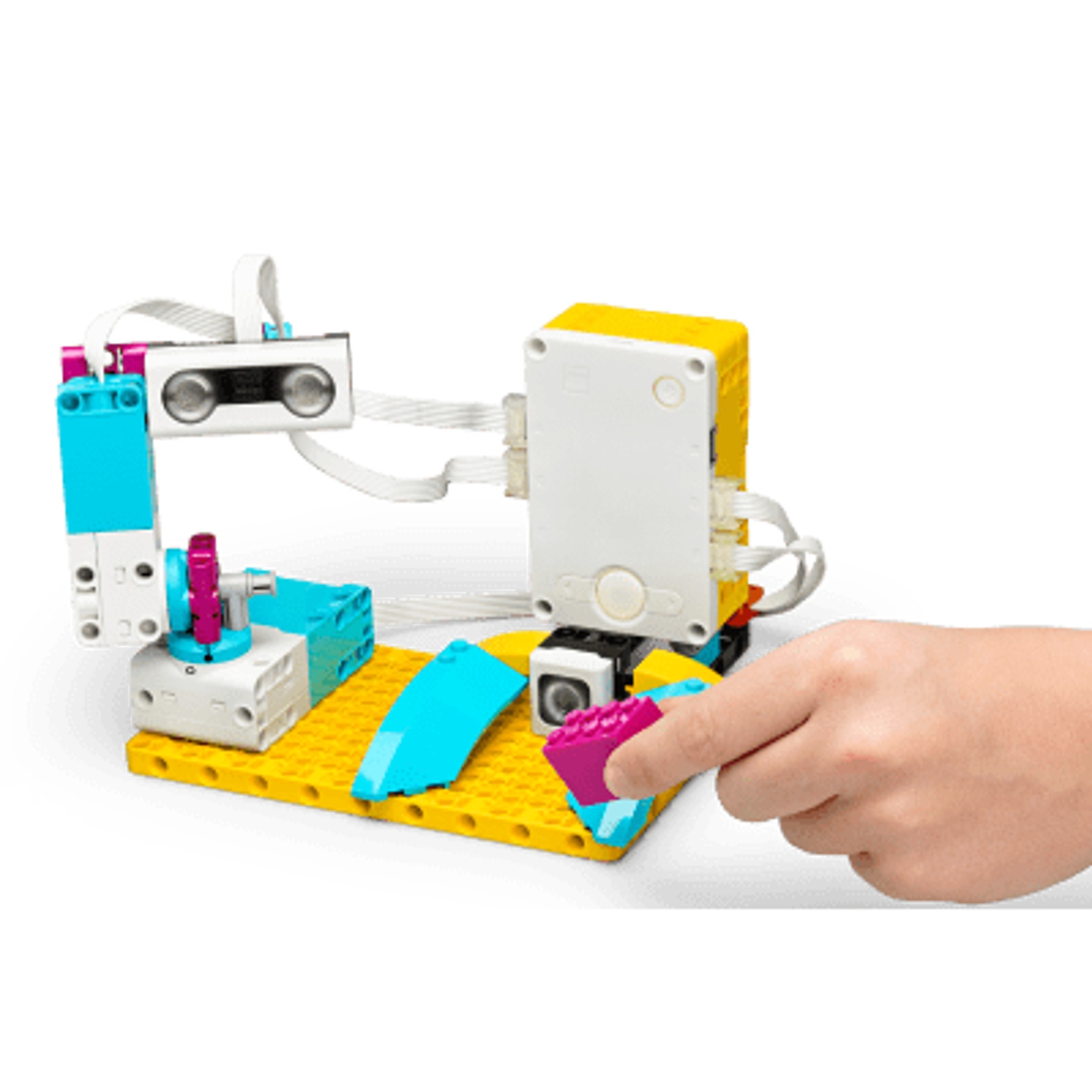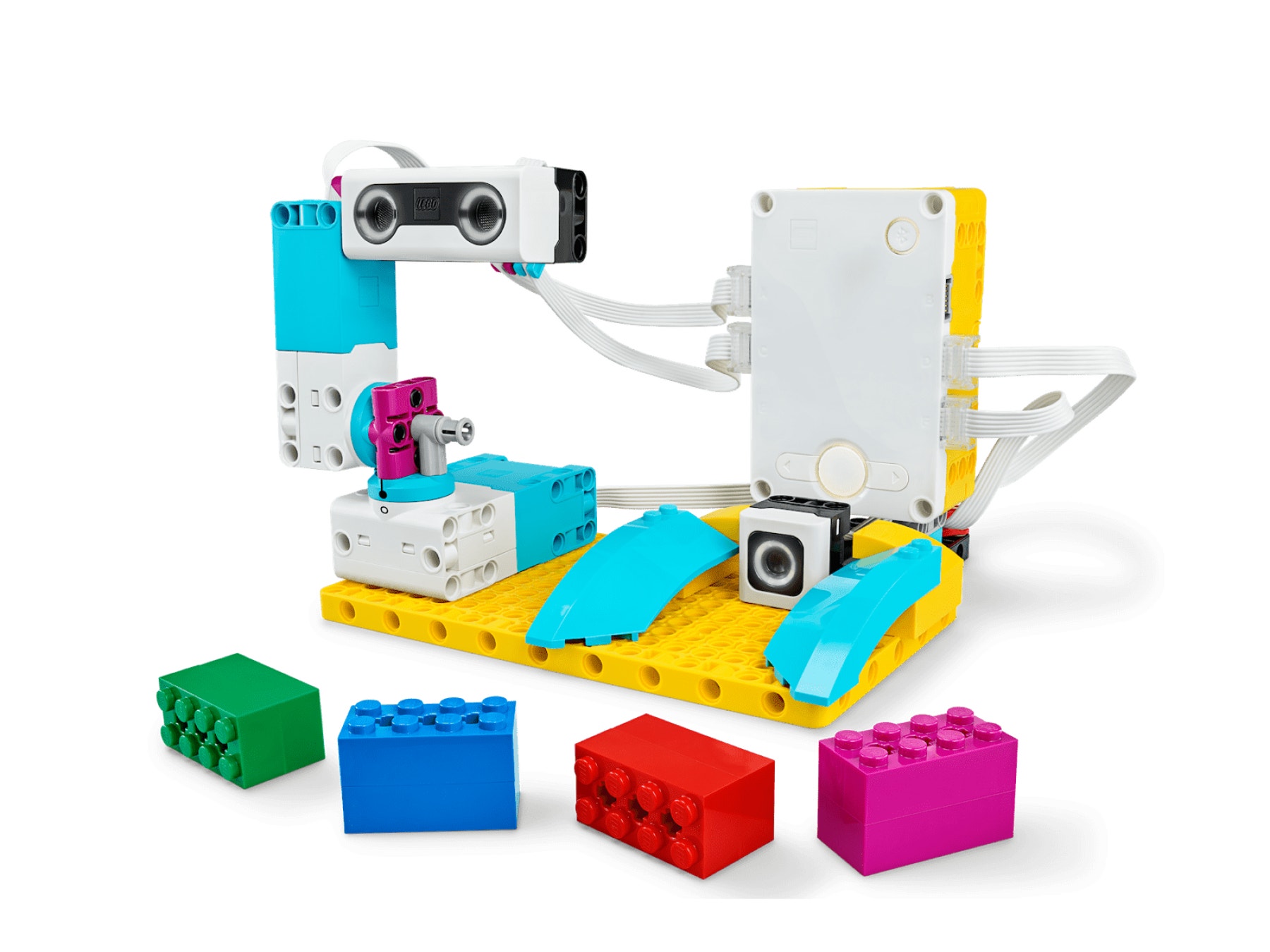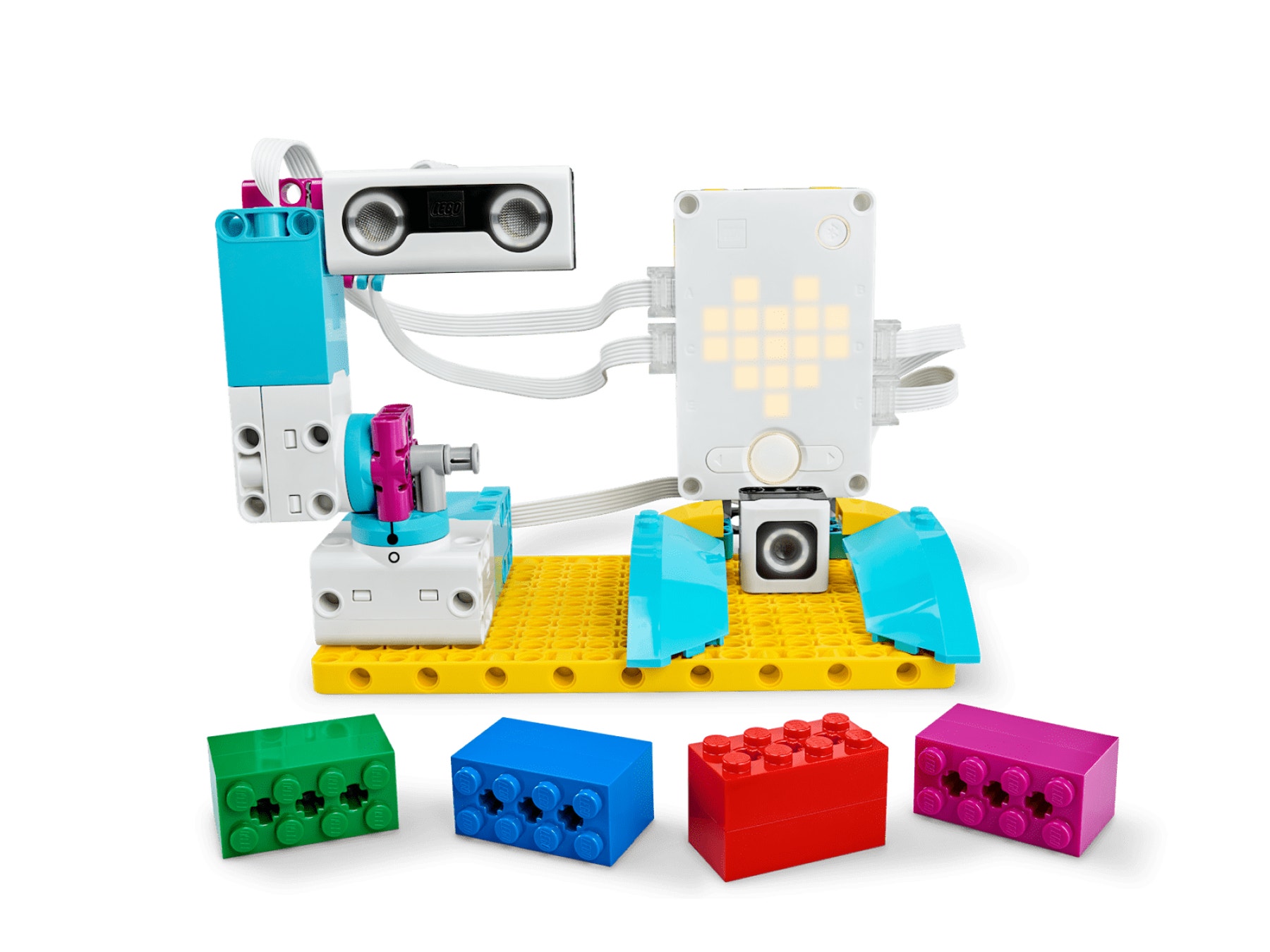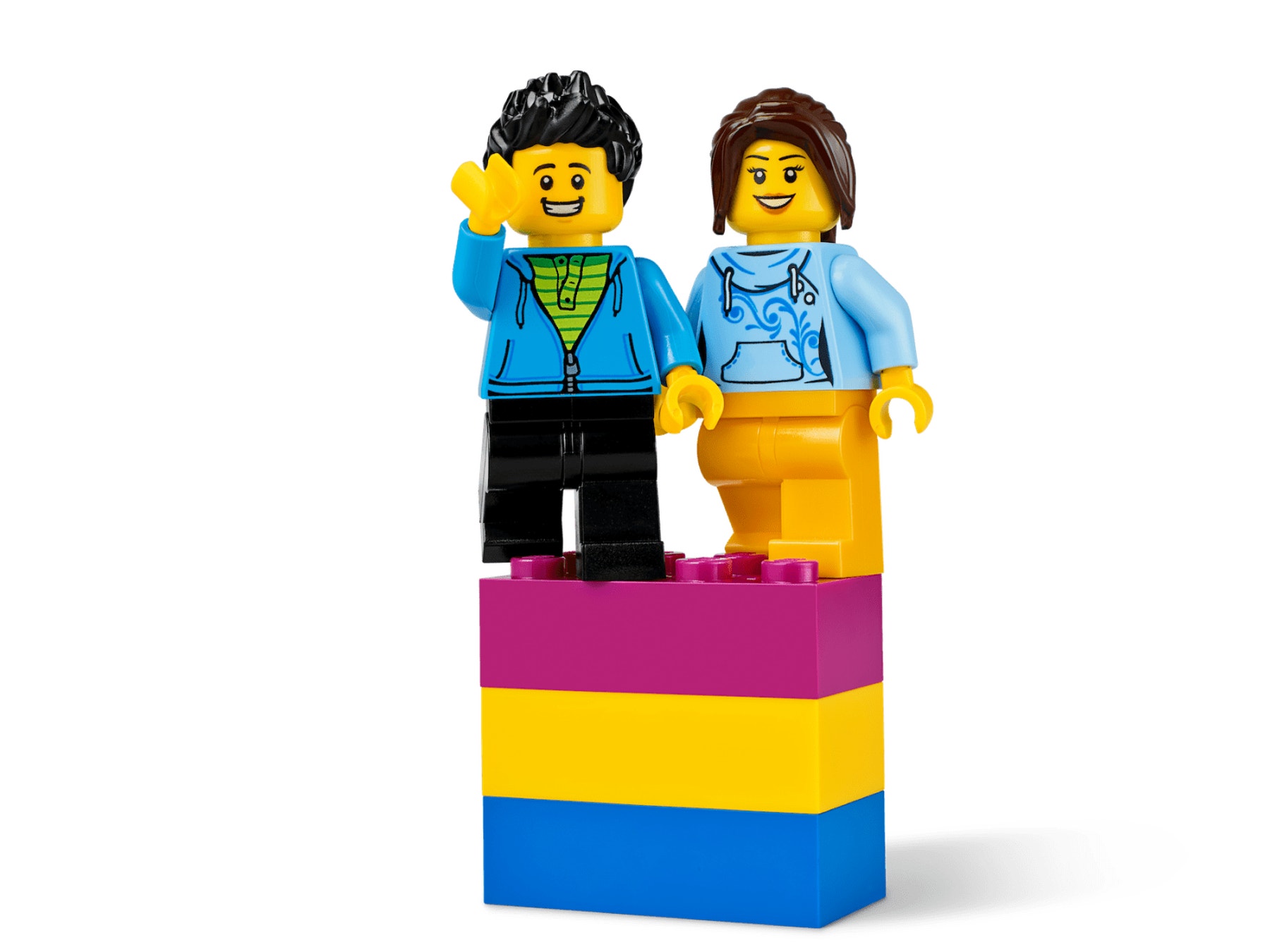Do you read user manuals or watch video tutorials?

You've just got a new gadget and you need to set it up.
How important are step-by-step instructions? Do you prefer videos or booklets?
Build this ”quality check” robot.

This robot is your new best friend. It’ll help you check the quality of your ideas… you’ll have it up and running in no time!
Power up!


Play this program and watch your robot power up.
Create a programming stack from this pseudocode.
Program these actions.
- Light up a heart
- When I see the color violet:
- Light up a smiley
- Turn motor A 30 degrees
- Turn motor A -60 degrees
- Turn motor A 60 degrees
- Turn motor A -30 degrees
- Play a sound
- Light up a heart
Pseudocode is a way to decompose complex actions into smaller parts. It’s like creating a step-by-step instructions.
Your programming stack could look like this:

Create pseudocode for the rest of the moves.

Watch this video now. Decompose all of the actions you see and write pseudocode for the movements.
Create programming stacks that follow your pseudocode.
How did you do?

Think about what you did well and what you could’ve done better.
Now that you know how to break big actions down into smaller ones, you can decompose any problem!